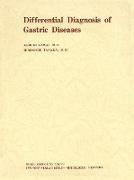Differential Diagnosis of Gastric Diseases
BücherAngebote / Angebote:
This book is intended to systematically explain our clinical experience with gastric diseases. We have concentrated on how to avoid overlooking changes on the gastric walls and how to improve diagnostic differentiation of these changes on the basis of the findings. It is difficult to differentiate malignancy from benignancy when the change is a minor or a very small one. Because of this, we have thoroughly classified protruding lesions and eXc:lvated lesions for diagnosis. The criterion adopted for classification is the commonly observed uneven ness of each gastric area. If the change protrudes higher than normal from the mucous mem brane, it is classified as a protruding lesion, and if it is deeper seated, as an excavated lesion. Differentiation follows diagnosis of the presence of disease. The whole process has been described concretely. There often are small size changes which have not been detected by cautious x-ray exami nations and are discovered by endoscopic observations. This book describes the techniques of endoscopic and radiologic examinations and the principles of macroscopic diagnosis based on our experiences. If the detected change is a protruding lesion, the following findings are necessary for differ entiation: 1) size and shape, 2) height, 3) nodular appearance over the protuberant surface, 4) color tone, and 5) morphology of the protuberance. In an excavated lesion: 1) size and shape, 2) depth, 3) nodular appearance at the bottom of the excavation, 4) color tone, 5) border region of the excavation, and 6) nature of the mucous folds.
Folgt in ca. 5 Arbeitstagen




